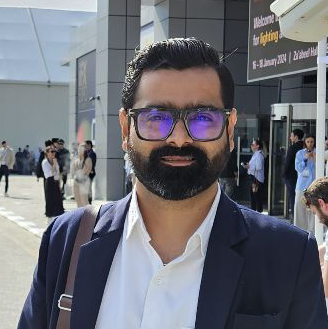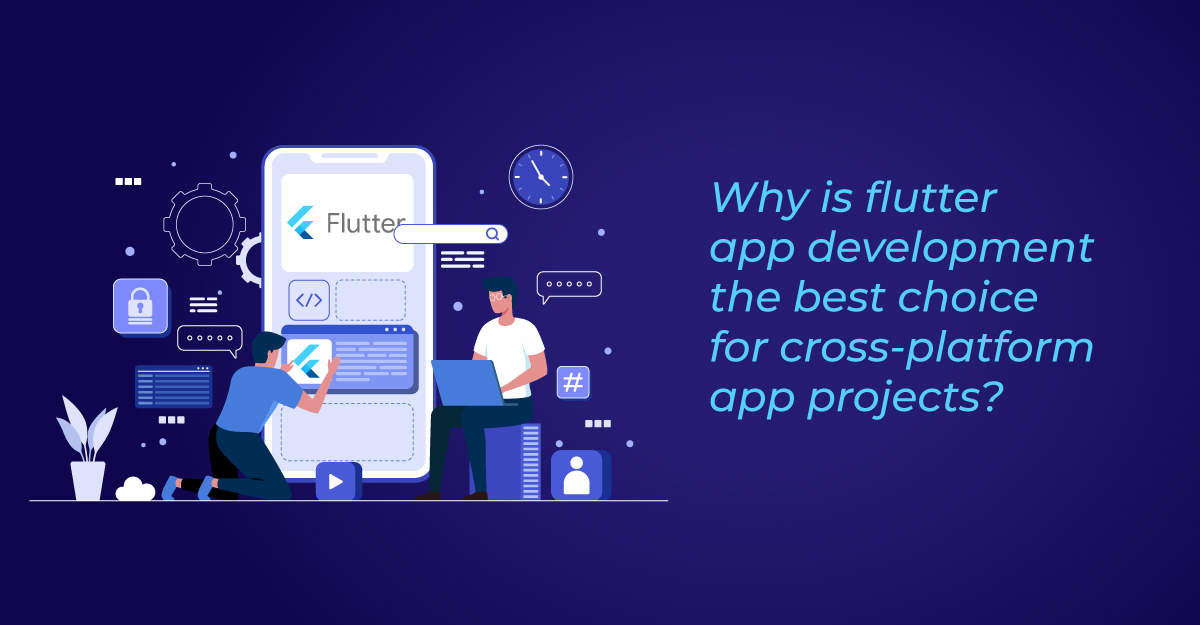How Flutter Helps Streamline Cross-Platform Development and Improve User Experience
Flutter is a popular framework for developing cross-platform mobile applications. It provides a set of tools and widgets that are easy to use and customize, making it an ideal choice for developers looking to create apps quickly and efficiently. Flutter also has a robust library of features, making it easy to add features like maps, social media integration, and more. Furthermore, the performance of Flutter apps is excellent, as the framework is designed to make the most of the underlying hardware. Finally, the fast development cycle of Flutter makes it an attractive choice for developers who need to get their apps up and running quickly.
Manageable Learning Curve
Flutter app development has a manageable learning curve, allowing developers to become familiar with its features and functions quickly. This is due to its intuitive design and simple development process based on the Dart programming language. Developers can develop apps with a few lines of code, making it easy to start. The development process in Flutter is split into two parts - the UI layer and the logic layer. The UI layer creates the application interface, while the logic layer is responsible for the back-end logic and data processing. This separation of concerns makes it easy for developers to understand how the application works, allowing them to get up and running quickly.
The Flutter framework also provides comprehensive documentation, making it easier for developers to learn how to use the framework. Additionally, many resources, such as tutorials and guides, are available online to help developers get started. Overall, the manageable learning curve of Flutter makes it an attractive option for developers who want to create mobile applications quickly and easily.
Widget-based Modular Development:
Widget-based modular development is a way to create applications using Flutter based on widgets. Widgets are the building blocks of a Flutter application and are used to create user interfaces and other components. They are created using a combination of code, components, and data.
The modular approach to development allows developers to break down their applications into smaller, reusable components. This makes managing complexity easier, reducing code duplication, and improving reusability.
With this approach, developers can create independent components, meaning that changes to one component will not affect the other. This helps ensure the application is maintainable, easily updated, and adapted for future needs.
Another benefit of widget-based modular development is that it helps to speed up development time. By breaking down the application into smaller components, developers can focus on creating the components they need for a specific feature rather than having to write code for the entire app. This reduces the time it takes to develop and deploy an application.
Widget-based modular development also allows developers to create more responsive and easier-to-debug applications. Developers can easily identify and fix issues by breaking an application into smaller components.
Hot Reload:
Hot Reload is a Flutter App Development feature that lets developers quickly and easily preview changes made to the code. It allows developers to see the effects of their code changes in real-time without restarting the app or recompiling the code. Hot Reload is a key element of the Flutter workflow, allowing for a fast and efficient development process. It also ensures that the app's code is always up-to-date and ready for testing or release.
Flutter is a Developer Friendly:
In addition to Hot Reload, Flutter App Development also includes several other features that make it a great choice for mobile app development.
These include a widget-based UI framework, a rich collection of third-party libraries, and a wide range of tools for building, testing, and deploying apps. Flutter makes it easy for developers to create high-quality apps that are fast, responsive, and reliable.
Overall, Flutter App Development is an excellent choice for developers who want to create beautiful apps quickly and efficiently. With its Hot Reload feature and other tools, developers can quickly and easily develop apps that are up-to-date and ready for release.
Business Logic Components (BLoC) Architecture:
Business Logic Components (BLoC) is an architectural pattern used in Flutter app development. The BLoC architecture is based on reactive programming and shares many similarities with the Model-View-Controller (MVC) pattern. The main idea behind the BLoC architecture is to separate the logic of an application from its user interface.
In the BLoC architecture, the business logic is written in a separate class, known as a BLoC. This class manages the application state and communicates with the user interface. It is also responsible for handling user input, such as button clicks and text input, and performing the necessary calculations and operations based on that input.
The user interface is written in a separate class called a BLoC widget. A BLoC widget displays the application data and user interface elements, such as buttons and text boxes. It also handles user interaction, such as button clicks and text input, and communicates the user input to the BLoC.
The BLoC architecture provides several benefits, such as improved scalability and reduced code complexity. It also makes testing and maintaining the code easier, as the business logic and user interface are decoupled.
DartPub provides access to reusable packages and libraries:
DartPub is a package manager for the Dart programming language. It is the official package repository for the Dart language and the primary way for developers to find and share reusable packages and libraries. DartPub is like other package managers like NPM and RubyGems, providing a central repository of packages that can be used in Dart applications. The repository is constantly updated with new packages and libraries, making it a great resource for developers looking for reusable project components.
DartPub provides several features that make it easy to find and use the packages and libraries in your projects. It includes a searchable database of packages, a detailed documentation page for each package, and a rating system to help developers find the most useful packages. The packages are all open source, so anyone can view the source code and contribute their improvements. Additionally, DartPub allows developers to easily share their packages with the community, making it a great place to find and share reusable code.
Flutter is Great for Animation in UIs:
Flutter is an open-source UI software development kit created by Google, used to build Android, iOS, and web applications. It is known for its great support for animations, allowing developers to create beautiful, smooth, and interactive user interfaces (UIs). Animations can be used in Flutter apps to create engaging and attractive user experiences. Animations can convey information, show progress, or add visual interest. Flutter provides a rich set of tools and APIs to create compelling and beautiful animations.
Animations are created in Flutter using the AnimationController class, which takes a TickerProvider and a Duration as parameters. The TickerProvider provides the ticking mechanism, while the Duration determines the length of the animation. The AnimationController class can control the animation by playing, pausing, and reversing it. The Animatable class is also available in Flutter, which provides a way to define an animation. Animatable objects can be used to define animation's beginning and end state and the transition between them.
Flutter also provides a powerful set of widgets for creating animations, including AnimatedBuilder, AnimatedContainer, and AnimatedSwitcher. These widgets allow developers.
Robust and Growing Flutter Community:
The Flutter community is one of the fastest-growing and most robust in the world of mobile app development. It is an open-source framework for building mobile applications developed by Google. It is used to develop applications for Android, iOS, Windows, Mac, Linux, Google Fuchsia, and the web from a single codebase.
The Flutter community is made up of developers from all over the world. It is constantly growing due to its unique features and capabilities. The powerful language allows developers to make complex, feature-rich apps in minutes. It is also incredibly easy to learn, as the documentation is well-written and the language is easy to pick up.
The community is also incredibly supportive and helpful. A great example of this is the Flutter Slack community. Here, people can ask questions, get help with coding issues, and discuss ideas and features. The community is also home to various resources, such as tutorials, courses, blogs, and videos.
The Flutter community is constantly evolving as more developers join it and take advantage of its capabilities. As such, it is a great place for developers of all levels to learn and grow in the world of mobile app development.
Robust Back-End with Firebase:
Firebase is a Backend-as-a-Service (BaaS) platform that provides a comprehensive suite of tools for developing and managing mobile and web applications. It is an ideal choice for Flutter app development, as it provides all the necessary features for building robust and secure back-end solutions for your mobile apps.
Firebase provides a wide range of services, from cloud storage and real-time databases to authentication and analytics, all of which can help you develop and maintain a successful Flutter app.
Cloud Storage: Firebase's cloud storage service stores your app's data in the cloud, providing a secure and reliable way to store, manage, and access it from anywhere. Real-time Database: Firebase's real-time database stores data in the cloud and keeps it synchronized across all connected devices. This allows your app to update its data in real time, providing a seamless experience for users.
Authentication: Firebase's authentication service provides secure authentication services to help protect your app's data. It also lets you control your app's data access with user-level security rules.
Analytics: Firebase's analytics service provides insights into how users interact with your app.
Conclusion
Flutter App Development is an excellent choice for cross-platform app projects. Its features, such as fast development cycles, low cost, and ease of access, make it a great choice for developers of all skill levels. Additionally, its wide range of widgets, libraries, and tools makes it easy to create beautiful and powerful applications that look and function great on any platform. With its growing popularity, Flutter is sure to remain a popular choice for cross-platform app projects in the future.



